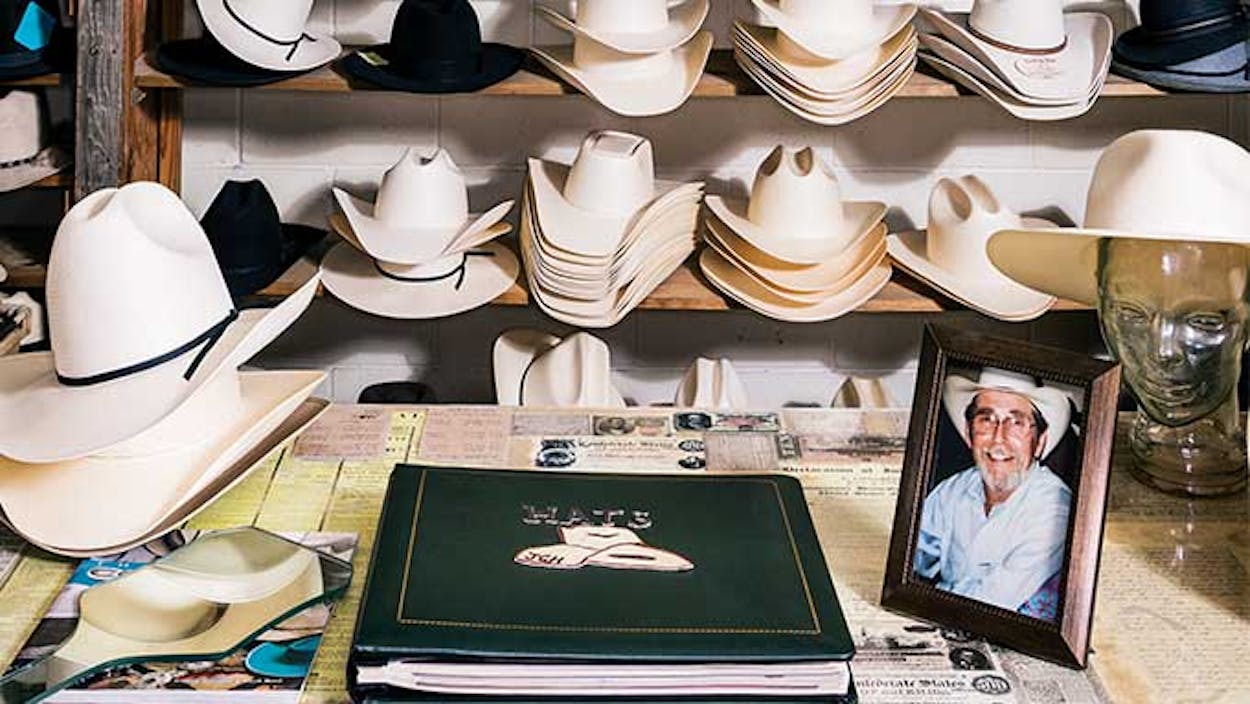Ronnie Bardwell’s felt hat still hangs on the wall at Johnny’s Custom Hatters, just where he left it before he passed away, in April 2013. His ashes reside nearby, along with his portrait, which his wife of 49 years, Drenda, looks at throughout the day. “I feel him here a lot,” she says from her perch behind the cash register in the hat shop she and Ronnie purchased in 1978. Ronnie—who made hats for Ronald Reagan and both George Bushes—loved the process of hat-making from the first time he tried it (under the guidance of the store’s original owner, Johnny Richmond). Decades later, Ronnie’s nephew Seth Bishop, whom the Bardwells helped raise, also took to the craft right away, and he started working alongside Ronnie full-time after high school. Today, 22-year-old Seth has taken over the hat-making operations, working mostly by hand, just as Ronnie did, with the aid of various antique tools. “It was all providence,” Drenda says. “Had it not been for Seth being able to step in, I don’t know if we would have kept the shop open.” And Seth doesn’t take the job lightly. “It’s truly my honor to carry on Ronnie’s legacy, making something with my own two hands that leaves people feeling good when they walk out the door.”

Q&A with Seth Bishop
Someone comes in and wants a custom hat. What happens next?
The first question is what style, what color, and what quality level. Then we measure the circumference of the head. We take measurements with a French conformateur, which was made in 1890. When we set it on a person’s head, it gives us the shape of that head, whether it’s extra-long oval, wide oval, completely round, et cetera. After taking all the measurements, we shape the crease to what looks best for the customer’s build and facial features. From the first time you put one of our hats on, it will already feel like you’ve had it forever, no breaking-in time.
How do you measure the quality of a hat?
We make felt hats in three qualities: 10x, 50x, and 100x. The numbers correspond to the amount of beaver fur in the hat—the more beaver fur, the higher the quality of the hat. Beaver fur is the best because it is the only fur that has interlocking barbs that make it waterproof. It holds its crease, has a velvety sheen to it, and feels slick to the touch.
Of all the styles, what is the number one request you get?
A three-crease cattleman’s with a four-inch brim—the traditional hat for cowboys, George Strait–style.
Are you mostly making hats for cowboys?
We make hats for deputies, councilmen, doctors, lawyers, and, of course, a lot of cowboys, ranch hands, and bull riders. I once made a top hat for a guy who was cooking at a chili cook-off. You just never know who will walk through the door! We also have lots of friends who come in to check on us and catch us up on the goings-on in Longview, people from all walks of life that Ronnie and Drenda have known for years.
You’ve been making hats since you were just fourteen. What part of the process was the biggest challenge to learn?
It took a while to understand how the flanges—the circular wooden molds we use—shape the brim to make a big difference in the fit. And some of the cleanings are a challenge. People sure do bring in some filthy hats!
What hat are you most proud of?
I have probably made well over two thousand hats so far. I love working on the Kilgore College Rangerette hats. For years we just creased and shaped their hats—and Drenda’s son Ryan, who is a leatherworker, made their belts and gauntlets—but this year the Rangerettes’ director, Dana Blair, asked us to custom-make all of the hats. Making their hats is some of the most fulfilling work I’ve done.







